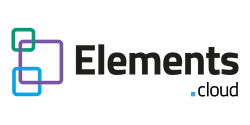After completing this unit, you’ll be able to:
- Prepare for a workshop
- Run it with confidence
PREPARATION
This is the most critical step – hence the 5Ps. Preparation Prevents Piss Poor Performance.
Preparation is getting the background of the scope of work, the politics of the people in the workshop and the gotchas
- Scope of project from project proposal and scope document
- Company mission/vision/strategy
- Objective of workshop from project sponsor or project manager
- Personal objectives of CEO, project sponsor and project manager
- Scope & context of workshop
- Audience – what is their name, role, title
- What personal conflicts & politics in the group, and where is power
- Terminology – what will turn them on, turn them off, no-no’s
- How much understanding & buy-in does the audience have of Buying Cultures, Operational Cultures and processes
- What is the pain to resolve
- Where is ROI or win
- Get Non-Disclosure Agreement (NDA) signed by 3rd party facilitator
- What 10 questions / discussion points do NOT want to come up (and how will you deal with them)
AGENDA
- Introductions – go around the room
- Introduce session – why they are there, pain, …
- Objectives of the session – working meeting to get a result
- Benefits of session –
- defines company operational strategy
- sets context for specific projects
- sets priorities for improvement projects
- kick start projects
- identifies project sponsors and demonstrates support
- Show ‘finished product’ – so they know what they are aiming at (include showing them the attachments and measures
- Strategic objectives on white board (tangible – with measures)
- Mapping from end point back
- Identify process owners
- Identify priority processes for initial projects
- Next steps
PROCESS MAPPING
- Important thing is get interaction and momentum – get them talking/arguing
- Start with blank sheet
- Start at back end of process “bill and collect payment” because it is easy, non-contentious and it gets the ball rolling
- Then move forward “what allows you to create the invoice”
- Don’t worry about inputs and outputs initially, but as the debate grows between audience about the context and scope of each activity use the input and output to define.
- Use the notes bubbles to document what the lower level activities are (if and when they get talked about) – try to avoid drilling down as it distracts from the top level
- To get them to focus on activities use “I have just joined your organisation as a XXXX, and I need to XXX. How do I know what to do next? How do I know when I’ve finished”
- If they cant agree, move to a whiteboard to sketch a flow of processes, then go back and map
HANDLING ISSUES AND OBJECTIONS
- Can’t agree on certain activities
- revert to white board
- try to define inputs & outputs
- look to CEO/sponsor to resolve
- Don’t have the correct people in the room
- check if workshop results will be considered ‘agreed’
- look to CEO/sponsor to resolve
- People focus on departments or reporting lines not processes
- Ask the ‘I do XXXX, how can I understand what to do?’ questions
- IT-focused people describe in systems (automated process) terms rather than the complete process
- Ask the ‘I do XXXX, how can I understand what to do?’ questions
=======================================================================
